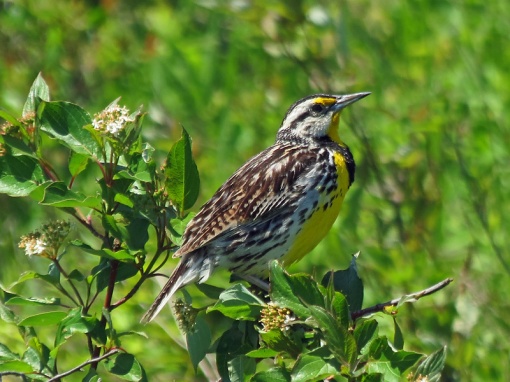Select this link to see photos of the Clay-Colored Sparrow
The Clay-Colored Sparrow is a small pale brown sparrow with a plain breast, a light crown stripe, an outlined ear patch, brownish rump, and a clean gray nape. It has a range from west and central Canada to north central United States. It has a habitat of scrub, brushy prairies, and Jack Pines. It is found perched in thickets. It has a diet of mostly seeds and insects. It is very close in looks to a Chipping Sparrow and is hard to distinguish.








